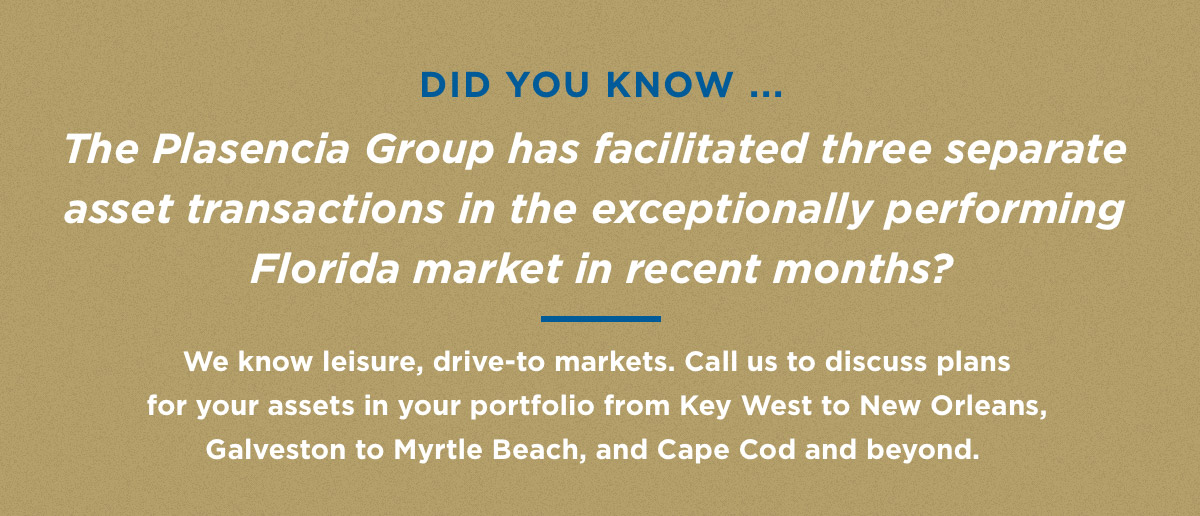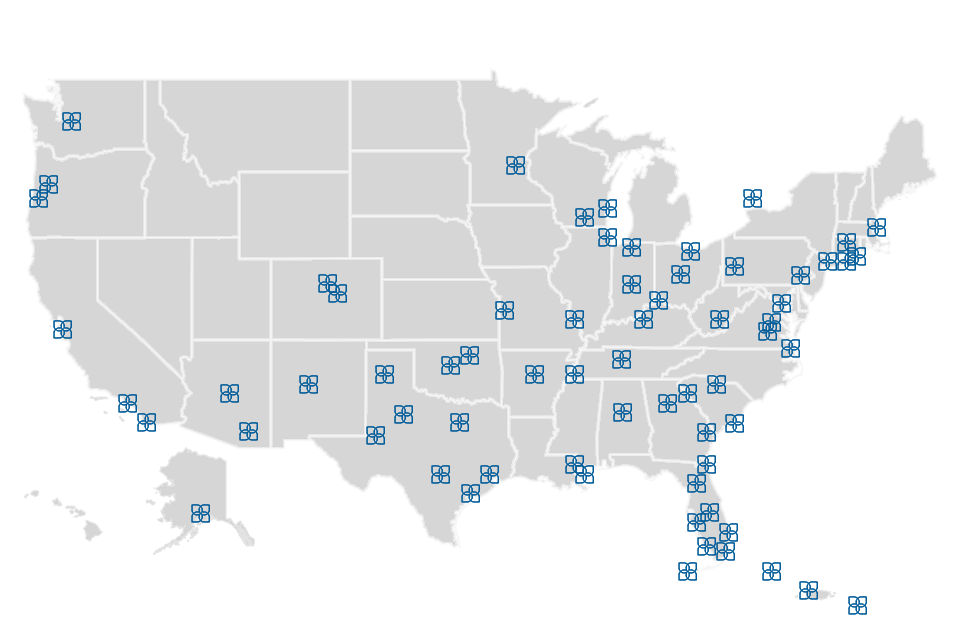Posted April 6, 2021
Several factors are driving up transaction activity and prices.
Private market lodging transactions should see a substantial price jump in the near term compared to the pre-vaccine transactions that comprised the bulk of sales in 2020. As the U.S. economy and travel industry recover from the COVID-19 pandemic, transaction pricing and deal activity are gaining steam alongside lodging performance that is steadily improving. In fact, recently released national data from STR indicates that, for the week ending March 20, 2021, occupancy reached 85% of the 2019 benchmark and 81% of 2019 ADR for the same period. In this article, we’ll address some of the factors at play and what astute buyers and sellers should know when getting in on the early action.
Distressed assets not stressing out the market
To date, the mass selloffs driven by lenders and distressed owners expected by many early in the crisis haven’t come to fruition on a broad scale. In fact, many of the deeply discounted, liquidity-driven, and lender-forced sales catalyzed by the pandemic made their way through the system last summer and fall. For owners of still-troubled assets who were able to withstand the initial COVID-19 shock, many are still in a holding pattern by taking advantage of continued lender flexibility and a fresh round of PPP loans. Simply stated, the remaining distress is not yet hitting the market in a meaningful way. Instead, the assets that are changing hands today tend to be voluntary sales of attractive assets where sellers can achieve unimpacted pricing.
Top leisure markets more attractive than ever
Travelers are flocking to destinations that are experiencing a strong resurgence. Investors are following right behind. Resorts and premium-branded, select-service assets on quality real estate, especially in waterfront and drive-to markets, are performing particularly well early in the COVID-19 recovery. They make excellent case studies for underwriting a substantial and swift leisure demand recovery as more Americans are being vaccinated. Take the Florida Keys, for example: all-time-high RevPAR performance is pushing capitalization rates to all-time lows.
Off-market, but not off the radar
The privilege of direct deal access and a lack of competition is clearly commanding pricing premiums as sales are happening discreetly and behind the scenes. Early movers—both buyers and sellers—are eager to secure transactions before the floodgates of activity open. Sellers are enjoying selling into solid post-pandemic performance, and cash-flush buyers are excited to avoid competing with the record amount of capital available in the marketplace today. Players from all corners are keeping their eyes on these early transactions as they anticipate increased activity in the coming weeks and months.
Examining public market indicators
Public REIT stock prices have climbed more than 50% in some instances since the vaccine efficacy announcements of early-November 2020. Those increases have lifted REIT enterprise values, implying improved valuations of their underlying real estate. Implied hotel and resort values are not too far off pre-pandemic levels. This is particularly telling given that many of the public lodging REITs’ portfolios have large concentrations of full-service assets and properties in urban cores where demand is taking longer to recover.
Looking back, only a very few private market transactions were listed or consummated between the November vaccine effectiveness announcement and the end of 2020. Assets that have gone to market post-vaccine should benefit from the same enhancements in underwriting and valuations that the REITs have enjoyed. Many of these are heading towards changing ownership soon, factoring in customary due diligence and closing periods. The large discounts that characterized deals struck in the summer and fall 2020 will be severely moderated in the post-vaccine transactions working their way through the pipeline today.
Who’s chasing and closing deals, and how?
Given the higher public company share prices mentioned in the previous section, REITs are quietly getting back in play on the acquisition front. In all, equity sources of every type—from private equity firms to family offices to institutional investors—are enthusiastically chasing deals.
Investors are also finding it helpful that the debt markets are open and functional, especially when it comes to lending on select-service assets and others that are performing well on a relative basis. Debt seems particularly plentiful for hotels in leisure or drive-to markets, especially if there is strong sponsorship. We anticipate increasing access to debt and more favorable terms for a wider range of acquisitions, refinancings, ground-up developments, and capital expenditure projects.
What’s next?
At the risk of repeating a phrase the industry is reading and hearing a lot lately, the amount of dry powder on the sidelines is truly remarkable, with a record number of investors vying to increase their holdings or enter the sector for the first time. We anticipate continued, but uneven improvements in performance across markets and asset types over the coming months. Expect to see a marked increase in broadly-marketed and off-market hotels and resorts alike in the second half of 2021 as more and more post-vaccine transaction data points materialize.
When evaluating your portfolio, investment criteria and overall lodging investment strategy, call on The Plasencia Group to provide unvarnished, sound advice. Our seasoned veterans have navigated five distinct periods of market recovery over several decades in the hospitality industry. We would be honored to put that experience to work for you.



